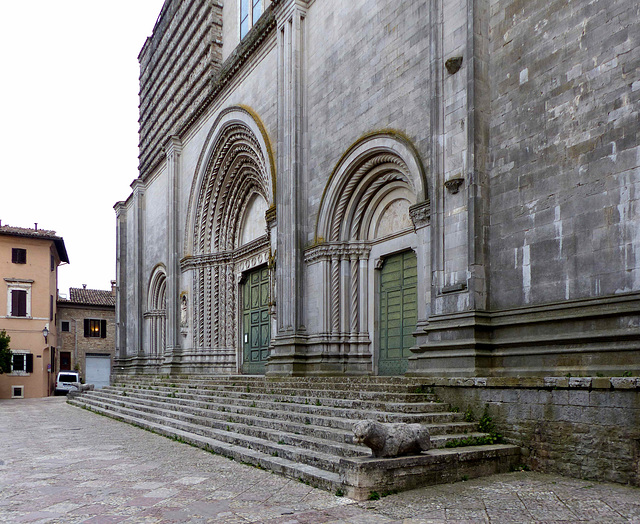Todi - San Fortunato
Todi - Chiesa del Santissimo Crocifisso
Todi - Chiesa del Santissimo Crocifisso
Todi - Santa María de la Consolación
Todi - Santa María de la Consolación
Orvieto - Duomo di Orvieto
Orvieto - Duomo di Orvieto
Orvieto - Duomo di Orvieto
Orvieto - Duomo di Orvieto
Orvieto - Duomo di Orvieto
Orvieto - Duomo di Orvieto
Orvieto - Duomo di Orvieto
Orvieto - Duomo di Orvieto
Orvieto - Duomo di Orvieto
Orvieto - Duomo di Orvieto
Orvieto - Duomo di Orvieto
Orvieto - Duomo di Orvieto
Orvieto - Duomo di Orvieto
Orvieto - Piazza della Repubblica
Orvieto - Sant'Andrea
Orvieto - San Giovenale
Orvieto - San Giovenale
Orvieto - San Giovenale
Todi - San Fortunato
Todi - Duomo di Todi
Todi - Duomo di Todi
Todi - Duomo di Todi
Todi - Duomo di Todi
Todi - Duomo di Todi
Todi - Duomo di Todi
Todi - Piazza del Popolo
Rieti - Multisala Moderno
Rieti - Cattedrale di Santa Maria Assunta
Rieti - Cattedrale di Santa Maria Assunta
Rieti - Basilica di Sant'Agostino
Rieti - Basilica di Sant'Agostino
Antrodoco - Santa Maria Extra Moenia
Antrodoco - Santa Maria Extra Moenia
Antrodoco - Santa Maria Extra Moenia
Teruel - Iglesia de San Pedro
Antrodoco - Santa Maria Extra Moenia
L'Aquila - Museo nazionale d'Abruzzo
L'Aquila - Museo nazionale d'Abruzzo
L'Aquila - Museo nazionale d'Abruzzo
L'Aquila - Museo nazionale d'Abruzzo
Location
See also...
Keywords
Authorizations, license
-
Visible by: Everyone -
All rights reserved
-
28 visits
Todi - San Fortunato


Todi was founded by the Umbri, in the 8th-7th century BC. The settlement on top of a mountain was named "Tutere", which meant "border", as it was located on the frontier with the Etruscans` area. It was conquered by the Romans in 217 BC and changed its name to Tuder.
Christianity reached Todi very early and already in the 2nd century, a bishop resided here. The Ostrogoths took the town after a siege and in 759 the Longobards followed. After negotiations between Pope Paul I and Desiderius, the last King of the Lombards and Charlemagne´s father-in-law, Todi became incorporated into the Duchy of Rome.
In 771 Charlemagne had the marriage annulled. Soon after he attacked and defeated Desiderius, assumed the title King of the Lombards (774), and disposed of his ex-father-in-law, who lived the rest of his life in the abbey of Corbie.
The church was likely built at the site of an ancient Roman temple. The acquisition of the relics of San Fortunato made the church a site for his veneration. A Benedictine monastery became attached to the church by the 1100s.
The church was acquired by the Franciscan order in 1292 and led to the construction of the church building we see today. Only the lower portion of the was faced in polished stone; the rest remains in bare brick. Built from 1295 to 1460, the church has a Gothic central portal with richly decorated spiraling pilasters, leafy and animal details, and depictions of saints and apostles.
Christianity reached Todi very early and already in the 2nd century, a bishop resided here. The Ostrogoths took the town after a siege and in 759 the Longobards followed. After negotiations between Pope Paul I and Desiderius, the last King of the Lombards and Charlemagne´s father-in-law, Todi became incorporated into the Duchy of Rome.
In 771 Charlemagne had the marriage annulled. Soon after he attacked and defeated Desiderius, assumed the title King of the Lombards (774), and disposed of his ex-father-in-law, who lived the rest of his life in the abbey of Corbie.
The church was likely built at the site of an ancient Roman temple. The acquisition of the relics of San Fortunato made the church a site for his veneration. A Benedictine monastery became attached to the church by the 1100s.
The church was acquired by the Franciscan order in 1292 and led to the construction of the church building we see today. Only the lower portion of the was faced in polished stone; the rest remains in bare brick. Built from 1295 to 1460, the church has a Gothic central portal with richly decorated spiraling pilasters, leafy and animal details, and depictions of saints and apostles.
- Keyboard shortcuts:
Jump to top
RSS feed- Latest comments - Subscribe to the comment feeds of this photo
- ipernity © 2007-2024
- Help & Contact
|
Club news
|
About ipernity
|
History |
ipernity Club & Prices |
Guide of good conduct
Donate | Group guidelines | Privacy policy | Terms of use | Statutes | In memoria -
Facebook
Twitter

Sign-in to write a comment.